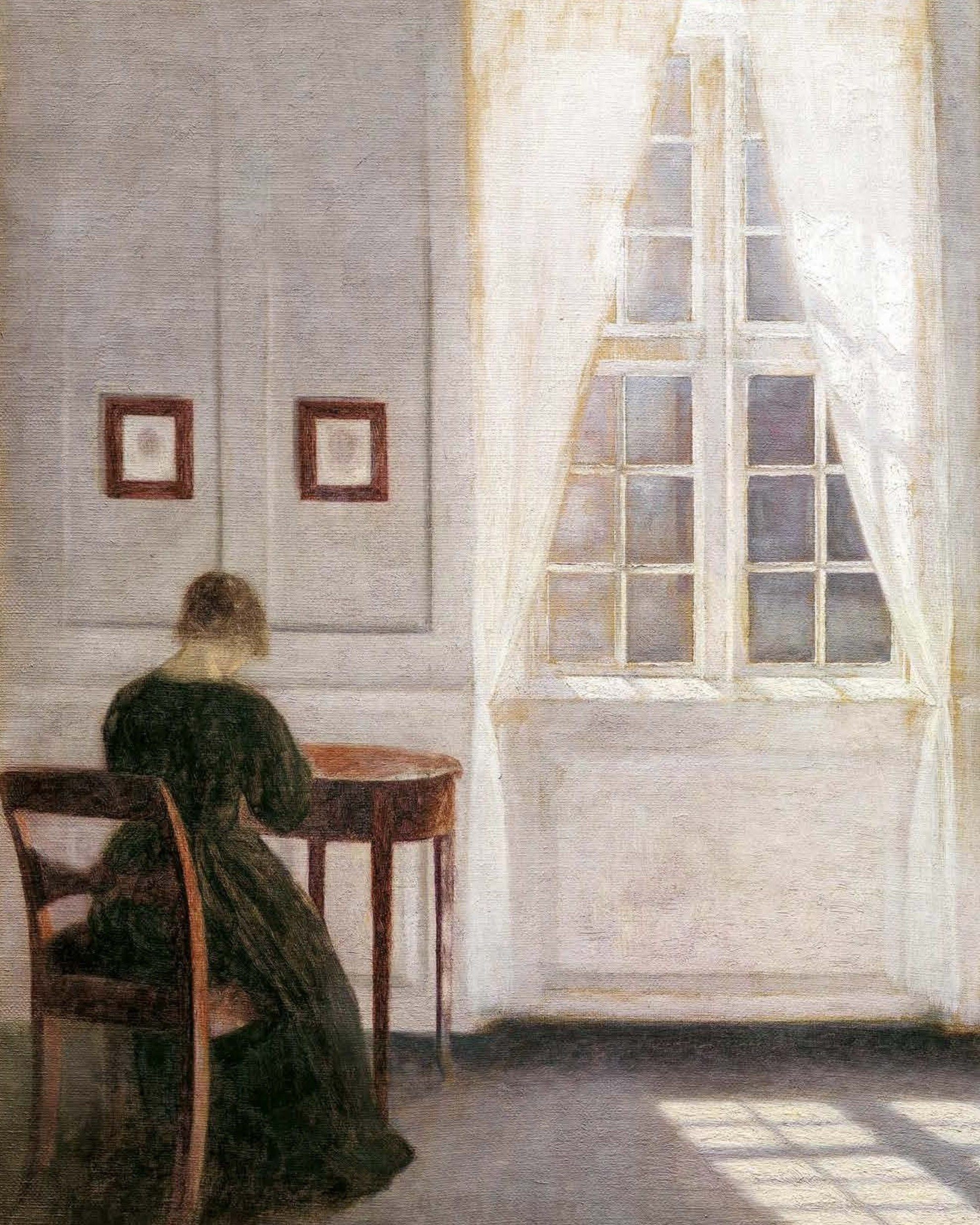
Lumen Cinereum
LUMEN CINEREUM
Giovanni MariottiA “metaphysical” cachet – comparable to what Giorgio de Chirico later gave to the category of Italian piazza – is what Vilhelm Hammershøi had conferred, decades earlier, upon the category of Danish interior. White doors, walls with rectilinear mouldings, solitary women dressed in simple black dresses with their backs turned, and the ashy gray light of the North. Mallarmé once wrote that “everything in the world exists in order to end in a book”; by eliminating furniture and adornments, and abolishing all human presence or reducing it to a minimum, Hammershøi suggests, instead, – as he strips motifs borrowed from seventeenth century Dutch art of all traces of story or anecdote – that “everything in the world exists in order to end in a painting.” Vermeer was rediscovered in the late nineteenth century. Hammershøi’s rediscovery began in the late twentieth and is still underway.






